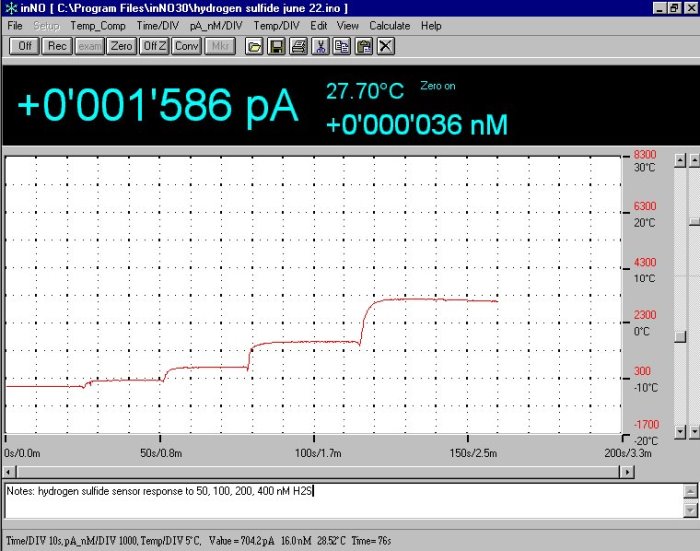| This new hydrogen sulfide sensor offer a simple, direct method for its in situ measurements. The optimizations of the sensors’ material, applied potential and choosing the proper coating can provide a very good selectivity against biologically relevant species such as nitric oxide, oxygen, hydrogen peroxide, carbon monoxide, ascorbic acid, nitrite, and nitrate. Since there is no hydrogen sulfide-selective membrane, so far, absolute selectivity is not achieved, yet. Sensors based on electrochemical mediators can suffer from interferences, since many oxidizing-reducing species can pass through the gas membrane and chemically reduce/oxidize the mediator such as hydrogen peroxide. |

Additions of 50, 100, 200 and 400 nanomolar H2S to a stirred solution. The sensor has a tip diameter of 250 micron. Applied voltage of 0.35 V. The results were recroded using inNO-T meter/data acquisition system
|
|
|
|
|
|
|


